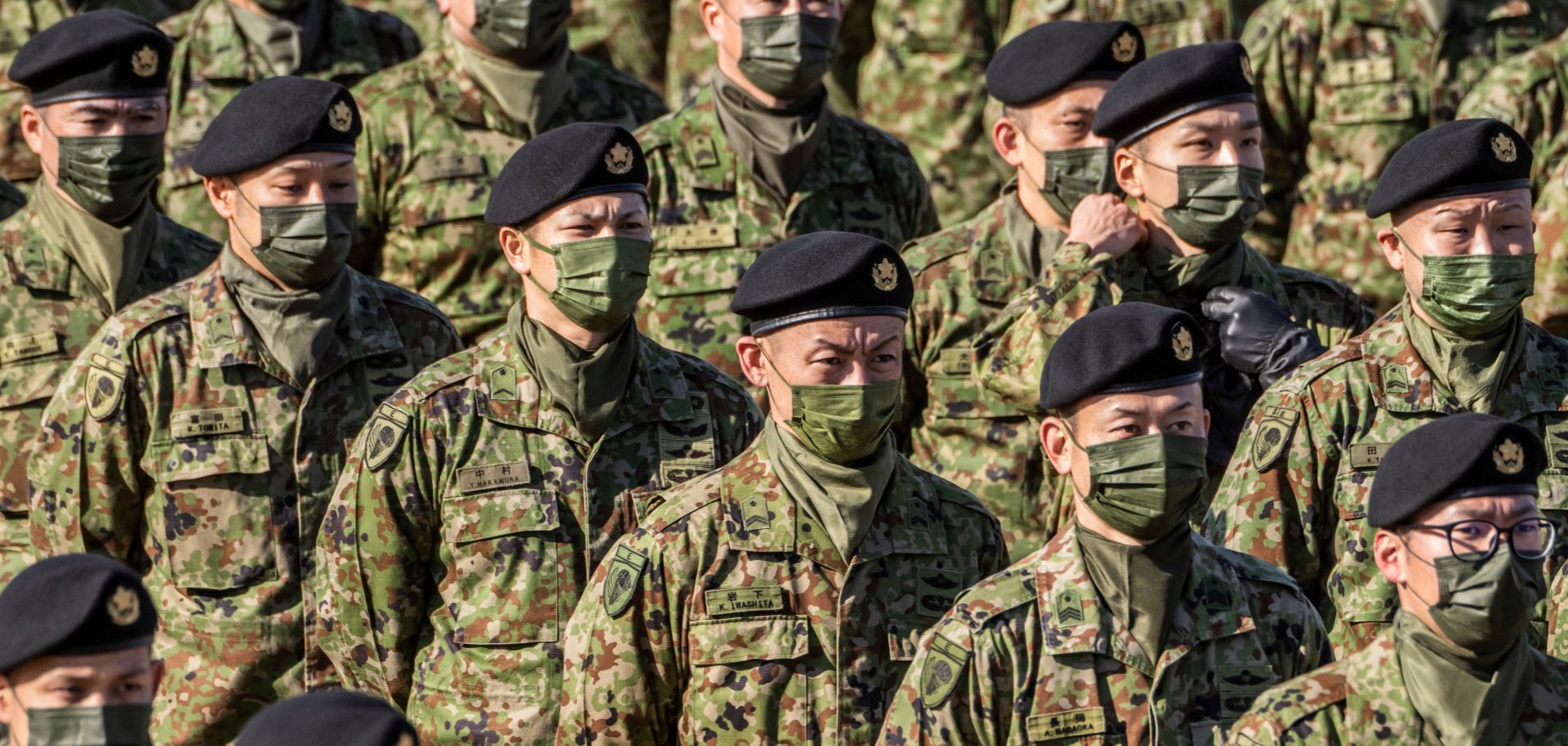
TOKYO – For decades, Japan has based its international clout on economic competitiveness, not military might. But, with China’s lengthening shadow darkening its doorstep, Japan now seems to be abandoning its pacifist postwar security policy – which capped defense spending at about 1% of GDP and shunned offensive capabilities – in favor of assuming a central role in maintaining security in the Indo-Pacific region.
Last month, Japan unveiled a bold new national-security strategy, which includes a plan to double defense expenditure within five years. That spending – amounting to some $320 billion – will fund Japan’s largest military build-up since World War II, and implies the world’s third-largest defense budget, after the US and China. Importantly, the new strategy includes acquisition of preemptive counterstrike capabilities, such as Tomahawk cruise missiles from the United States, and the development of its own hypersonic weapons.
Japan began laying the groundwork for this shift under former Prime Minister Abe Shinzō, who was assassinated last July. On Abe’s watch, Japan increased defense spending by about 10%, and, more significantly, reinterpreted (with parliament’s approval) the country’s US-imposed “peace constitution” to allow the military to mobilize overseas for the first time since WWII. Abe also sought to amend Article 9 of the constitution, which renounces “the threat or use of force” by Japan, but his efforts were stymied by popular protests.
Prime Minister Fumio Kishida has not run into the same resistance. On the contrary, opinion polls show that a majority of Japanese support the military build-up. A similar shift has taken place in Kishida himself, who was widely considered a dove when he was foreign minister – a label that he publicly embraced.
The impetus for this shift is clear. In 2013, the year Xi Jinping became China’s president, Japan’s national-security strategy called China a strategic partner. According to the updated strategy, by contrast, China represents “an unprecedented and the greatest strategic challenge in ensuring the peace and security of Japan.” China’s incremental but unrelenting expansionism under Xi has rendered Japan’s pacifist stance untenable.
This is more apparent than ever in the wake of Russia’s invasion of Ukraine, which has intensified fears that China could pursue a military option against Taiwan, which is effectively an extension of the Japanese archipelago. Last August, five of the nine missiles China fired during military exercises in the waters around Taiwan landed in Japan’s exclusive economic zone. Japan understandably views Taiwan’s security as vital for its own.
Japan is not the only once-conciliatory power to respond to Xi’s muscular revisionism with a newfound determination to bolster its defenses and forestall the emergence of a Sinocentric Indo-Pacific. Australia and India have embarked on the same path.
Moreover, a similar trend toward militarization has emerged among Japan’s Western allies. Germany, another pacifist country, has pledged to boost its defense spending to 2% of GDP (the same level Kishida is targeting) and accept a military leadership role in Europe. The United Kingdom has already surpassed the 2%-of-GDP level, yet aims to double its defense spending by 2030. The US has just hiked its already-mammoth military spending by 8%. And Sweden and Finland are joining a reinvigorated NATO.
While Japan’s rearmament is more widely accepted than ever – and for good reason – it is unlikely to be enough to deter China’s expansionist creep. After all, despite having the world’s third-largest defense budget, India has been locked in a military standoff with China on the disputed Himalayan border since 2020, when stealth encroachments by the People’s Liberation Army caught it by surprise. Clashes continue to erupt intermittently, including just last month.
Unlike Russia, which launched a full frontal assault on Ukraine, China prefers salami tactics, slicing away other countries’ territories with a combination of stealth, deception, and surprise. The PLA’s so-called “Three Warfares,” which focus on the psychological, public-opinion, and legal aspects of conflict, has enabled China to secure strategic victories in the South China Sea – from seizing the Johnson South Reef in 1988 to occupying the Scarborough Shoal in 2012 – while barely firing a shot.
Because China generally avoids armed conflict, it incurs minimal international costs for its actions, even as it unilaterally redraws the geopolitical map of the South China Sea and nibbles away at Bhutan’s borderlands, one pasture at a time. The government in Beijing managed to decimate Hong Kong’s autonomy without facing significant Western sanctions.
All this impunity has only emboldened Xi, who is now seeking to replicate the South China Sea strategy in the East China Sea by escalating maritime and aerial incursions to strengthen its claims to the Japanese-administered Senkaku Islands. It has even tried to police the waters off the Senkakus.
Japan’s response to China’s provocations has so far remained restrained, to say the least: no Japanese defense minister has so much as conducted an aerial inspection of the Senkakus, lest it anger China. Yet Japan’s embrace of Tomahawk missiles and hypersonic weapons does not necessarily represent an effective means of resisting China’s hybrid warfare, either. For that, Japan must find ways to frustrate China’s furtive efforts to alter the status quo while avoiding the risk of open combat.
Japan’s push to become more self-reliant on defense should be welcomed. Improved defense capabilities will translate into a more confident and secure Japan – and a more stable Indo-Pacific. But if Japan is to “disrupt and defeat” threats, as the national-security strategy puts it, Japanese leaders must move proactively to beat China at its own game.
Brahma Chellaney, Professor of Strategic Studies at the New Delhi-based Center for Policy Research and Fellow at the Robert Bosch Academy in Berlin, is the author of Water, Peace, and War: Confronting the Global Water Crisis (Rowman & Littlefield, 2013).
Copyright: Project Syndicate, 2023.
www.project-syndicate.org http://www.project-syndicate.
















